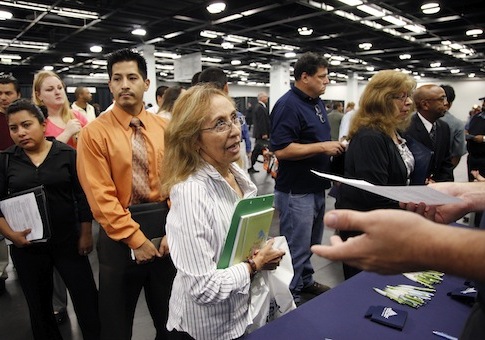The number of Americans not participating in the labor force hit a record 95,102,000 in December 2016, according to the latest numbers released by the Bureau of Labor Statistics.
Last month, the number exceeded 95 million for the first time, with 95,084,000 Americans not participating.
The bureau counts those not in the labor force as people who do not have a job and did not actively seek one in the past four weeks.
The labor force participation rate, which is the percentage of the population that has a job or actively looked for one in the past month, increased from 62.6 percent in November to 62.7 percent in December.
The unemployment rate for all Americans increased from 4.6 percent in November to 4.7 percent in December. This measure does not account for those individuals who have dropped out of the labor force and simply measures the percentage of those who did not have a job but actively sought one over the month.
The "real" unemployment rate, otherwise known as the U-6 measure, was 9.2 percent in December.
Democrats such as Sen. Bernie Sanders (I., Vt.) and Federal Reserve chair Janet Yellen have said this measure accounts for discouraged workers and those working part time instead of full time for economic reasons and is more representative of the labor market.
There were 5,598,000 Americans working part-time in December who would rather have a full-time job but cited economic reasons for not having such employment.
According to the bureau, involuntary part-time workers are "persons who indicated that they would like to work full time but were working part time (1 to 34 hours) because of an economic reason, such as their hours were cut back or they were unable to find full-time jobs."
The National Federation of Independent Businesses evaluates trends data and conducts surveys of small-business owners and members to see how businesses are operating in the economy. They found that 16 percent of small firms say they plan to create new jobs and there was a slight gain of 0.01 average workers per firm.
"With promises of lower taxes and less regulation, small business owners are becoming more enthusiastic about investing in their business," said NFIB Chief Economist William Dunkelberg. "The labor market is tightening, however, which makes it more difficult for employers to find qualified workers. Until the employment participation rate increases with more people trying to reenter the workforce, that will be a short-term challenge for small businesses."
"After years of ball-and-chain regulations, high taxes, and spiraling health insurance costs, small business owners are seeing a light at the end of the tunnel," said NFIB President and CEO Juanita Duggan. "President-elect Trump has staked out policies that small business owners favor, and he has backed them up with impressive cabinet nominations."
